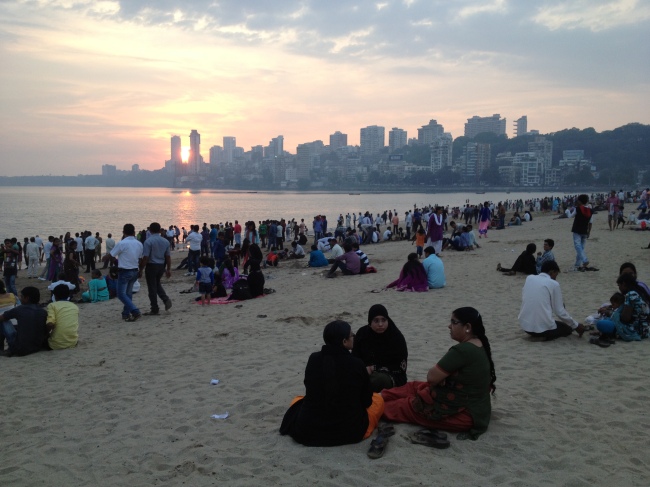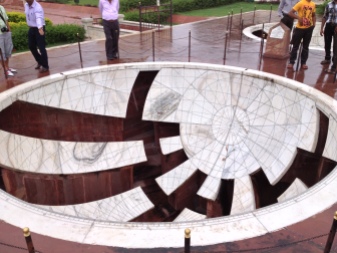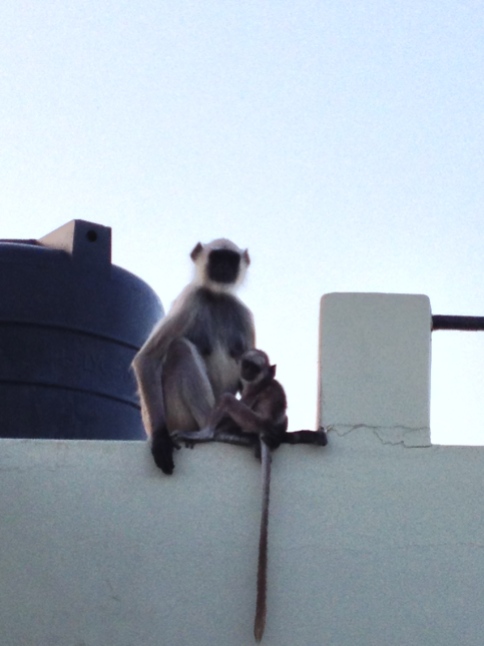Recently, as part of my Field Methods and Ethics class, I was tasked with conducting three separate interviews (one in Hindi) of Indians outside of both my program and my home-stay. This assignment was supposed to prepare me for my Independent Study Project, which I’ll be starting in about 4 weeks. For those that don’t know, a major part of any SIT program is a 4 week Independent Study Project at the end of the program. We can go anywhere (safe) in India. My proposed area of study is definitely focused on social entrepreneurship, however I’m still trying to find a more defined focus. Planning and researching for my project has been a very time consuming, but ultimately very education and rewarding part of my time here. Anyways, back to the interview: My last interview was with the host-mother of a girl on my trip. Her name was Manisha and the interview was one of the most interesting and though provoking experiences I have had in India so far. I conducted this interview in English and because Manisha spoke English very well, we had an awesome, in-depth conversation on her work in Social Entrepreneurship. She works for a British NGO named Trade Craft, which works with artisans to distribute their products, enhance their capabilities as producers, and other enabling activities.
I have provided a rough transcript of our interview below:
How would you describe your work?
Trade Craft is a UK based NGO that works with rural, artisan women to build their capacity. There are several organization in India that work with a similar business model. These include Sadria, URMUL [a NGO Milk Union which works to build the capacity of rural Milk producers. They have now expanded operations to include rural schools, artisan programs, etc. Our group visited their headquarters but unfortunately I was busy fighting Dengue.], Rangasutra, and FABIndia [which collaborates with an organization which sources its clothe from rural artisans and does some similar work in capacity-building as Trade Craft] among others. Rangsutra, which is a part of URMUL, actually gives each artisan equity in the organization so that collectively the artisans own 25% of the organization. Personally I work as a project manager. I also work in the community to spread the principles of Fair Trade. As a project manager I work with artisans to gain market access through a variety of methods.
What challenges face NGO’s working in this area?
It’s very difficult to communicate the necessary changes to artisans. For example, a big part of our business is certifying these artisans with various certifications including fair trade and organic. Take an organic certification- its very difficult the necessary steps for this certification to rural farmers or artisans. In addition its difficult to communicate the necessary changes that need to occur in the supple chain for this certification to be sustainable in a business sense.
What are the greatest challenges facing these artisans?
One of the greatest challenges that face artisans is the ability to recognize changing market trends. It is very difficult for innovation to occur at this grassroots level. People in this work aren’t used to drastic changes in market dynamics.
What is an example of this?
In India we are seeing a rise in the middle and upper class. Especially with the rise in the middle class, there is a rising market need for more expensive, nicer crafts. Whereas before it was more important for artisans to produce things that could be marketed to both the upper class and the worst off, now they need to recognize this growing trend in middle class house furnishings, etc. This all has to do with changing demographics and its often difficult for rural artisans to see these things. This is a challenge we face as an organization but we are doing work to help artisans in this area.
In addition, it is often difficult for artisans to make the coordination necessary to distribute to larger organizations. Organizations working in this field are now changing their business model to incorporate more local coordination and regional offices although this may always be a difficult aspect of this sector.
Maybe for these reasons, in addition to the simple fact that this business is profitable, more and more organizations are operating as hybrid organizations. Trade Craft for example has a for-profit arm that sources free-trade crafts and food to domestically, in India, but also internationally. They also have a non-profit arm that works with training and empowering these local artisans.
The idea of globalization has been getting a lot of grief in India recently and lots of international circles. People feel that globalization is often characterized by the exploitation of the underserved populations by massive corporations. Do you feel this model represents a more sustainable form of globalization?
Absolutely. These artisans can be incorporated into the international markets and take advantage of changing demographics and market needs. It is also sustainable because it supports the rural population. [There are lots of interesting dynamics that have played out in India’s growth. One of these is that nearly 70% of India’s population resides in the rural areas, urbanization has occurred by population growth in cities is relatively low compared to rural areas, however almost all of the economic growth has occurred in cities.]
What role do you see the international community playing in the development of this type of business model?
I think there is lots of work that needs to be done in international markets, domestic markets, and with local organizations to ensure the spread of business like this and the push for capacity building activities in these developing markets. For these businesses to become sustainable, it is important for them to incorporate economies of scale. This involves investment and coordination. There also needs to be consumer awareness and desire. For example, if we are going to support the sustainable practice of hand-made cloth [popular in rural areas- this was a central part of the India’s revolution, and one of Gandhi’s biggest movements, as it represented Indians going back to their roots.], we need to build consumer awareness about what is manufactured by machines and what is manufactured by hand. Then we need to build desire.
What skills do you teach the artisans?
We teach skills including product development, market research, supply chain development, and other similar business development skills.
Do you teach soft skills such as innovation?
Yes- this is central to our education. We need to teach ideas like entrepreneurship and innovation in order for these artisans to be successful. This goes back to the challenges we spoke about including understanding market dynamics. These are much harder to teach because people don’t necessarily understand the value of these ideas.
How important is it for social enterprises to included the underserved population throughout the supply chain (as opposed to solely consumers)?
It’s very important. If this is truly going to be a sustainable business than we need to improve the lives of these people. However, when we talk about inclusiveness we also need to include them as consumers.
How important is it for MNC’s to include the underserved population in their value chains?
Well its very important for corporations because it goes back to the notion of inclusiveness. On the corporation’s end- corporations need to meet market need. This means if there is consumer demand, like we spoke about earlier, they will take the necessary steps to build supply chains.
How do we scale this type of work? (THE MOST IMPORTANT QUESTION)
Through work like we have been talking about, through the development of supply chains, and through economies of scale and the work involved in that aspect.
Again this is a rough transcript but I’ve tried my best to represent the themes that we touched on. The ideas portrayed by Manisha are consistent with the books and reports I have read on the topic, but her insight on the challenges facing these artisans, including the “how” (as Bill Drayton would appeal to) of how to enable them, was fascinating. These themes are going to become a huge part of my life in the next few weeks and I’ll try to post interesting info and interactions that I have.




































